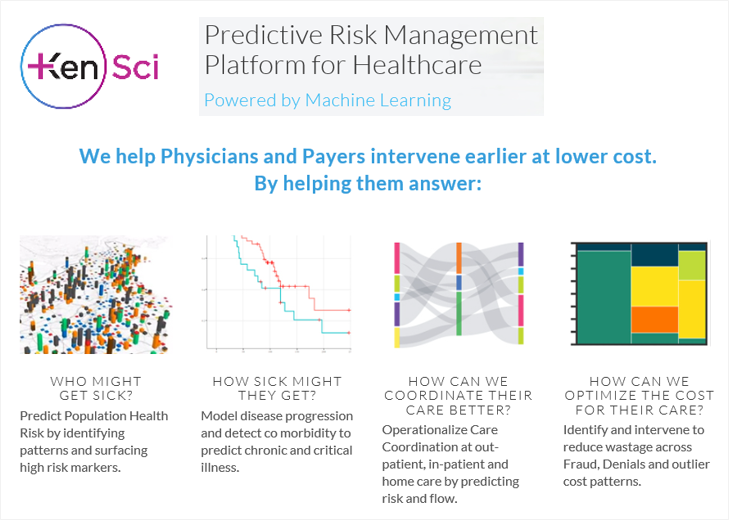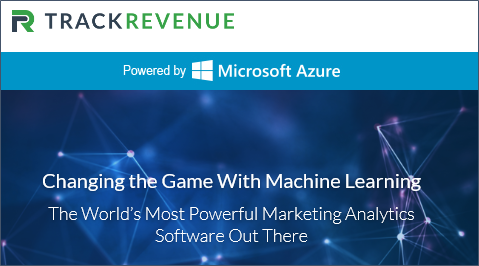Microsoft AI – Now Serving Critical Care Patients, Water-Insecure Populations in Africa, Bank Customers in New Zealand & Many More
New customers are benefiting from Microsoft's Artificial Intelligence offerings at a record pace – here's a look at some of the latest.
Saving the Lives of Patients in Critical Care
A large part of our current healthcare system is geared towards treating patients only after they have fallen quite sick. While it would clearly be very desirable to proactively prevent debilitating medical incidents, doing so has been a formidable challenge.
Consider, for instance, a patient who has recently undergone major surgery, and whose condition might deteriorate rapidly, even fatally, within minutes because of a risk of multi-organ failure following that surgery. Even though the human body signals this type of failure in advance, such signals can be very subtle (e.g. momentary heart fluctuations, short episodes of breathing difficulty, profuse sweating that stops after a few minutes, etc.). The signals are also transient, so nurses and doctors may not catch them during their routine checks on the patient. However, medical sensors can detect and stream such signals in real-time to centralized monitoring systems which can then alert healthcare providers before something bad happens.
KenSci began as a collaboration between the University of Washington and Microsoft Research. Their unique team, comprised mostly of doctors and data scientists, share a passion around applying AI to help people live longer, healthier lives. KenSci is pioneering the use of machine learning in predictive healthcare risk management. By identifying which patients will get sick, when, how sick they'll get, and what can be done to help them, their solutions are helping patients, doctors, nurses, and other participants in our healthcare ecosystem.
KenSci uses data from electronic medical records and claims, as well as psychosocial, operational, and patient-generated data to align payers and providers around value-based care initiatives. The KenSci Risk Prediction platform, built on Microsoft's cloud and data technologies, including Azure Machine Learning, is powered by over 150 prebuilt ML models, and predicts care and cost risks for 17 million patients today. These ML algorithms can identify patterns that indicate serious health deterioration in patients, sometimes as many as eight hours in advance.
Read more about the KenSci story here – it's a testimonial to how AI, IoT and cloud computing are coming together to save the lives of patients in critical care.
Addressing Water Security in Kenya
Millions of people around the globe live in a state of "water insecurity", in the constant fear of not having enough water on a given day. The time spent finding and carrying water, if local wells are not reliable, steals precious time away from farming, making a living or going to school, and water issues are closely tied to a cycle of poverty.
The REACH initiative is hoping to break this vicious cycle. Funded by the UK government, REACH is using the expertise of professors and machine learning experts from the University of Oxford and, in partnership with UNICEF and other organizations, working towards the goal of making five million poor people water-secure in Africa and Asia.
The team has developed sensors such as the ones that go into our smartphones or fitness bands and putting them inside water pump handles on rural wells. These sensors are used to monitor groundwater level and to improve the pace of repairs that may be needed to fix broken pumps. Their accelerometer and gyroscope record the motion and vibration of pump handles and, by applying machine learning techniques on this data, predicts whether the water is coming from a deep or a shallow source, and how much remains underground. These models were developed on a desktop computer but the team was able to accelerate their work by using the Azure cloud, including R and Python in Azure Machine Learning, which helped them go straight from lab to production.
Learn more about the REACH story here. Their solution is now getting ready for widespread deployment across Kenya, and they hope to bring similar benefits to water-insecure populations elsewhere.
Providing Best-in-Class Banking to New Zealand Customers (by Switching from SAS to Microsoft)
Heartland Bank has served businesses, households, and the rural sector in New Zealand since 1875. To stay competitive with larger banks and newer internet payment services while still staying true to their customer-focused roots, the bank decided to adopt a data-driven approach that would lead to more business agility, innovation and growth.
There are specific product niches where Heartland is strong, each with its own requirements, such as around analyzing risk, evaluating credit lines, understanding cash flows etc., and it was increasingly critical for the bank to be proactive, providing early warnings when things were changing in any one of these areas. Heartland found it very labor-intensive and time-consuming to change financial models on their earlier SAS system. What's more, these analytics tools were expensive, being licensed on a per-user basis, thus limiting their access to only a small group of IT staff.
What Heartland needed was a flexible solution that would evolve and scale with the company. They wanted an analytics platform to support future innovation, with sophisticated predictive analytics capabilities. To support their growth strategy, the bank decided to replace their existing SAS system with a platform based on Microsoft R Server and SQL Server 2016. R Server uses the powerful, open source R statistical programming language which would enable Heartland to take advantage of a broad range of analytics, including big data statistics, predictive modeling, and machine learning. The bank also had the confidence that they could tap into a global community of millions of R developers.
The changes they made have sparked a new attitude towards data at Heartland. Business users across the bank can directly work with the new data models, rather than having to rely on IT to produce reports. Employees have direct access to real-time information and no longer need to wait for overnight batch processing. The expanded access to critical information has resulted in employees seeking answers to more complex questions and thus more sophisticated analytics. Bank employees are now able to get answers to questions such as "What would happen to our deposits if we increased our six-month deposit rate by 20 basis points over the next three months?" Many more exciting opportunities are on the horizon, such as using cognitive services for facial recognition, for instance, to compare the image on photo IDs with loan applicants, as an added layer of security.
You can learn about the Heartland Bank story here. Their partnership with Microsoft is helping them provide innovative, best-in-market products to customers across New Zealand.
Boosting the ROI on Marketing Campaigns (by Switching from AWS to Azure)
Silicon Valley startup Track Revenue offers powerful marketing analytics software-as-a-service. Track Revenue helps advertisers optimize their return on investment (ROI) on online ads.
Although Track Revenue initially hosted their service on Amazon Web Services (AWS), when they were looking to launch the next generation of their service, after extensive evaluation, they decided to switch to Azure. Aside from unique technology advantages that the team could find only in Azure, Track Revenue also got strong engineering collaboration and support from Microsoft, as well as support for all their open source technology (which, as they discovered, was as good as or better than AWS, depending on the software). In many cases, they got comparable or better performance than AWS, and for significantly lower cost (for instance, with their use of Mongo virtual machines).
A key technology advantage they found in Azure was Cortana Intelligence, a fully managed suite that delivers state of the art big data and AI capabilities on Azure. The suite, which includes Azure Machine Learning, helped Track Revenue transform customer data into intelligent action. When a user clicks on an ad, for instance, a set of data points are sent to the Cortana Intelligence Suite, and predictions based on those data points get sent back to Track Revenue. The Track Revenue service then serves the most appropriate landing page or offer to the potential buyer, with the entire process getting completed in milliseconds. This has helped Track Revenue optimize conversions and revenues, and in near real-time. Aside from making machine learning very easy, Cortana Intelligence also supported extensive custom configuration options, and proved to be a big win for Track Revenue, right out of the gate.
The interoperability between services was another factor that tipped the scales in Azure's favor. For example, Track Revenue is able to take advantage of streaming analytics, Event Hubs, Azure SQL Database, Azure SQL Data Warehouse, Redis Cache, Table Storage and more.
Based on tens of thousands of campaigns that are using their service, Track Revenue on Azure has boosted customers' ROI by 15 percent, conversion rate by 12 percent, and earnings-per-click (EPC) by 38 percent (with some customers seeing EPC soar by as much as 47 percent). What's more, Track Revenue shaved months off the development of its new service by taking advantage of Azure, rather than their former cloud platform. In the end, Track Revenue wasn't content to move just their flagship service to Azure, they did a complete migration of their entire infrastructure to the Microsoft cloud service.
Learn more about Track Revenue here. By betting on Azure, they've successfully released a next-generation version of their service, one that extensively optimizes customers' marketing campaigns.
Delivering Optimal Airline Seat Pricing, Blazing Fast
The price of airline seats depends on thousands of factors that change very rapidly because of the dynamics of supply and demand. There can be tens of millions of price inquiries per hour and prices are affected by competitor prices, flight availability, weather changes, and network demand.
When airline companies – as well as top retailers and manufacturers – need competitive up-to-the-minute pricing, they turn to PROS. PROS runs lightning-fast analytics on billions of records to deliver the right prices at the right time to their customers.
Until a few years ago, PROS software was deployed on-premises, either at the customer sites or in PROS' private cloud. This naturally required large capital investments for hardware infrastructure, either on the part of PROS or their customers. If customers were to scale down or end their service subscription, they would be left with tons of unused hardware. Each datacenter also required a lot of manpower attached to it. Furthermore, when PROS acquired a couple of SaaS companies, they further saw how they could benefit by consolidating their infrastructure at a cloud provider.
PROS decided to move their operations to the Azure cloud and get out of the business of buying and managing hardware. In doing so, they found they could substantially lower their infrastructure costs. They also took advantage of SQL Server 2016 with R Services, which allows the same ML used by data scientists in their research to be used in production. Furthermore, R Services in SQL Server also brought scalable, R-based analytics into the very place where PROS' data is generated, helping them improve database process performance by a factor of 100x. The company turned to Azure Data Lake (ADL) to store unstructured data, running processes in ADL to interpret customer behavior, mine insights and determine the right price for the customer, while also helping their clients gain incremental revenue. With operations in the cloud, scaling is easy, and the company is now able to grow with the accelerating pace of demand.
You can read more about the PROS case study here. Using the power of the Azure intelligent cloud, PROS is able to deliver state of the art software-as-a-service (SaaS) solutions that run complex calculations on numerous data sources, and establish optimized prices with great speed, precision and consistency – and at a lower cost.
CIML Blog Team




